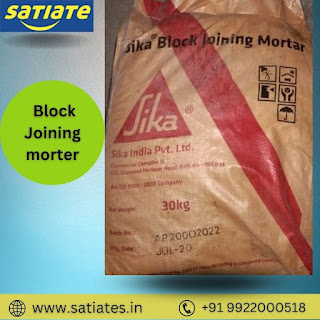Building Strong Foundations: The Importance of Block Joining Mortar in Construction

Block Joining morter is a crucial component in the construction of walls and structures using concrete blocks. It is a specially formulated mixture of cement, sand, and additives that create a strong bond between the blocks, ensuring a sturdy and long-lasting structure. One of the main benefits of block joining mortar is its ability to provide excellent adhesion. This helps to ensure that the blocks stay in place even in adverse weather conditions. Block Joining morter also helps to improve the structural integrity of the wall, making it more resistant to damage caused by natural disasters such as earthquakes or high winds. Block Joining morter is available in different types, depending on the specific requirements of the project. For example, there is standard block joining mortar, which is suitable for general-purpose construction. There is also fast-setting block joining mortar, which is ideal for projects with tight deadlines. Additionally, there is flexible block joining ...
.jpg)